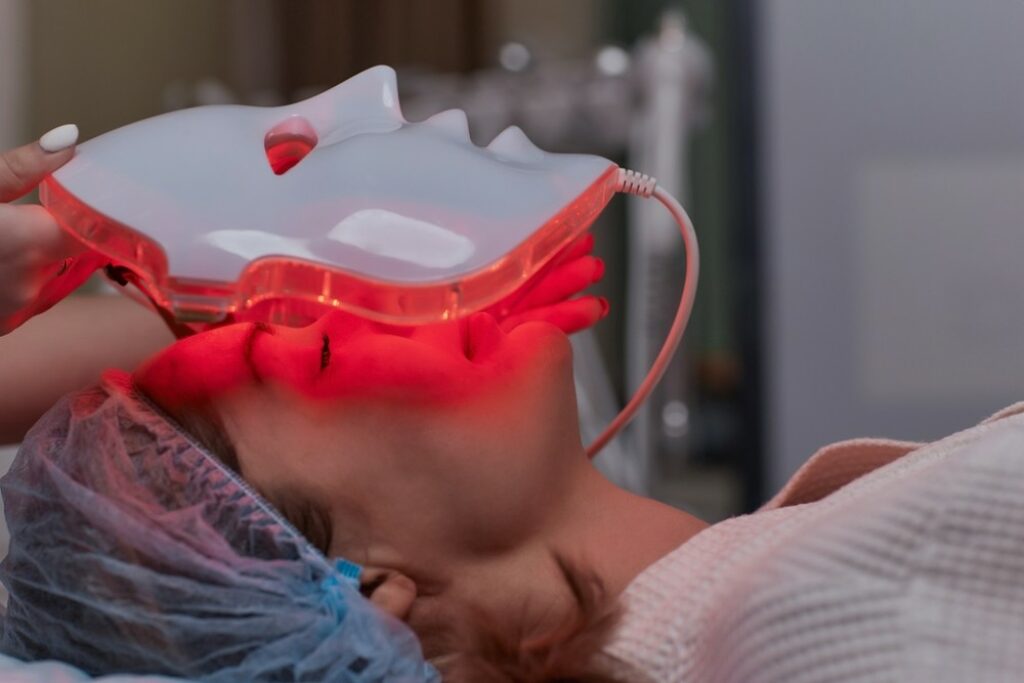
Benefits of LED Masks
It may sound like something straight out of a science fiction movie, but LED masks have actually shown to be effective with skin enhancement and rejuvenation. Better yet, they can even be used on a daily basis.
Related Topics (Sponsored Ads):
LED masks, short for Light Emitting Diode, are steadily becoming more popular as a promising non-invasive treatment tool for skincare. As an innovative approach, these masks utilize various colors of LED lights to target specific skin conditions and problems, plus promote overall skin health.
Although more invasive treatments may have a more impressive outcome, they come with inconvenient downtime and a host of possible complications and unwanted side effects. Most LED masks provide a non-invasive alternative to invasive procedures, such as chemical peels or laser treatments. Plus, they do not cause pain, require no downtime, and are generally safe for home use if instructions are followed properly.
Keep reading to gain a brighter, broader light into the types of LED masks and how they work, along with how to use them properly, the various beauty benefits they offer and other useful info.

How They Work
LED masks are lightweight, wearable devices that cover the face and emit a variety of light wavelengths. They typically feature small LED bulbs embedded within the mask, strategically positioned to deliver light therapy to the skin. These special lights also come in various colors, such as red, blue, and amber, each with its unique therapeutic properties. These lights penetrate the skin at varying depths, targeting specific skin concerns and problems.
They work based on the principle of photobiomodulation, which involves the use of specific wavelengths of light to stimulate cellular activity in the skin. When the LED lights come into contact with the skin, they penetrate the different layers, triggering photoreceptors in the cells. These photoreceptors quickly absorb the light energy and convert it into cellular energy, promoting various beneficial effects.
Types Of LED Light
There are several types of LED lights available, with varying wavelengths that penetrate the skin at different depths. The most popular light therapies include:
– Red Light Therapy: With a wavelength between 620 and 700 nanometers, red light has a shallow penetration depth that stimulates cellular activity close to the surface. It can help reduce inflammation, promote collagen production, and improve overall skin tone and texture.
– Blue Light Therapy: With a wavelength between 405 and 420 nanometers, blue light reaches a mid – depth and possesses antimicrobial properties that can combat acne-causing bacteria. It can also potentially reduce sebum production, leading to fewer breakouts.
– Near-Infrared Light Therapy: Near-infrared light, with a wavelength between 700 and 1,100 nanometers, has a greater penetration depth. It has the greatest ability to enhance tissue repair, increase circulation, and reduce inflammation, thereby promoting wound healing and rejuvenating the skin.
Primary Benefits
The health and beauty benefits of these masks include:
a) Skin Rejuvenation: By stimulating collagen production and increasing blood circulation, LED masks contribute to skin rejuvenation. They may minimize fine lines and wrinkles, improve skin elasticity, and enhance overall skin texture and tone.
b) Acne Treatment: Blue light is particularly effective at targeting acne. It achieves this by killing Propionibacterium acnes, the bacteria responsible for acne breakouts. It may also help regulate oil production, reducing the occurrence of new blemishes.
c) Redness Reduction: Green and yellow lights can help calm inflammation and reduce redness, making them suitable for individuals with sensitive or irritated skin. This effect can also help soothe skin conditions like rosacea and eczema.
d) Improved Skin Texture: Provides enhanced skin texture by promoting cell turnover, resulting in a brighter, smoother complexion.
e) Hyperpigmentation Treatment: Red light is especially helpful in reducing hyperpigmentation. By targeting melanocytes, which produce melanin, these masks may help fade dark spots and even out skin tone.
f) Improved Wound Healing: The application of near-infrared light promotes tissue repair and accelerates wound healing. It enhances the formation of new blood vessels, stimulates fibroblasts, and aids in the natural synthesis of collagen.
g) Increased Product Absorption: When used before applying skincare products, these masks can improve product absorption. The light therapy increases circulation, allowing the skin to better absorb the active ingredients present in serums, moisturizers, and other skincare formulations.
Choosing the Right LED Mask For You
When selecting an LED mask, consider the following factors:
Light Colors: First and foremost, you’ll need to determine your specific skin concerns and choose a mask that offers the desired LED light colors for addressing those concerns.
~ Quality and Safety: Opt for masks from reputable brands that adhere to safety standards and have positive customer reviews.
~ Adjustable Settings: Look for masks with adjustable intensity levels to customize the treatment based on your skin’s sensitivity and needs.
~ Comfort and Fit: Ensure that the mask is comfortable to wear and fits securely on your face for a hassle-free experience.
Important Tips
To maximize the benefits of LED masks, be sure to incorporate them into your skincare routine as follows:
1. Cleanse your face thoroughly before using the mask to ensure optimal light penetration.
2. Adjust the mask to fit comfortably on your face and secure it in place.
3. Follow the manufacturer’s instructions regarding session duration and frequency.
4. Consider using LED masks after applying serums or other skincare products to enhance their absorption.
5. Maintain consistency by using LED masks regularly as part of your skincare ritual.
Safety Precautions
During the use of an LED mask, some precautions should be kept in mind – Avoid direct exposure to the eyes, limit session durations to recommended times, and consult a dermatologist before using LED masks. This is especially prudent if you have any pre-existing skin conditions or are undergoing specific treatments.




